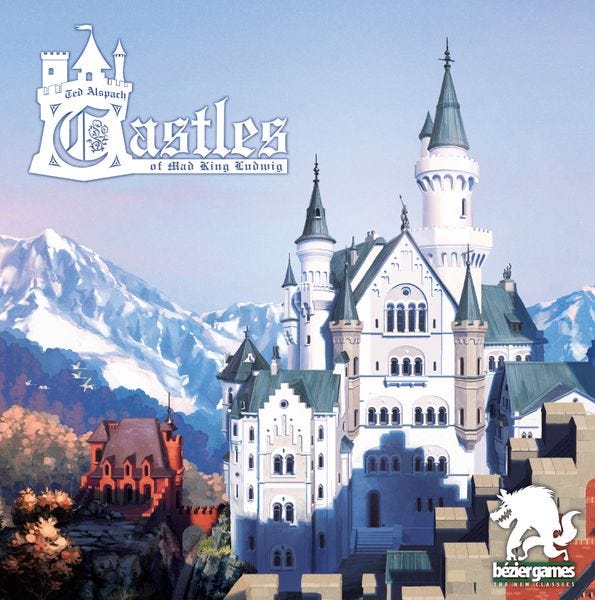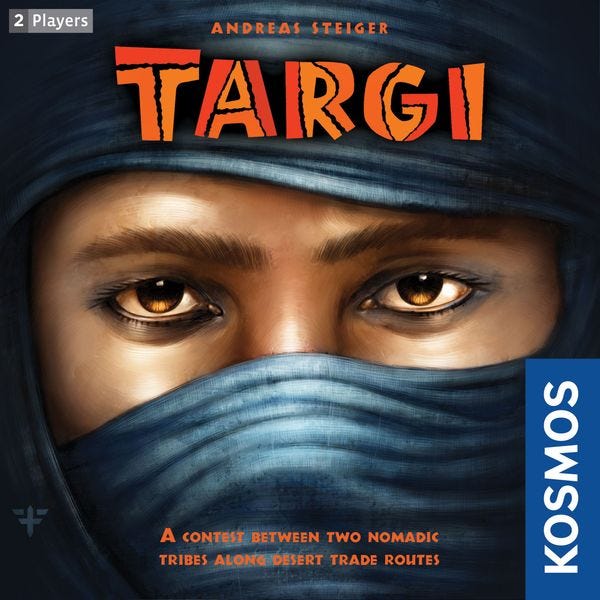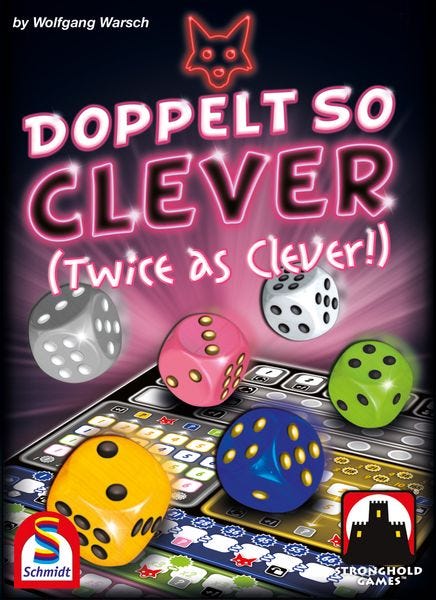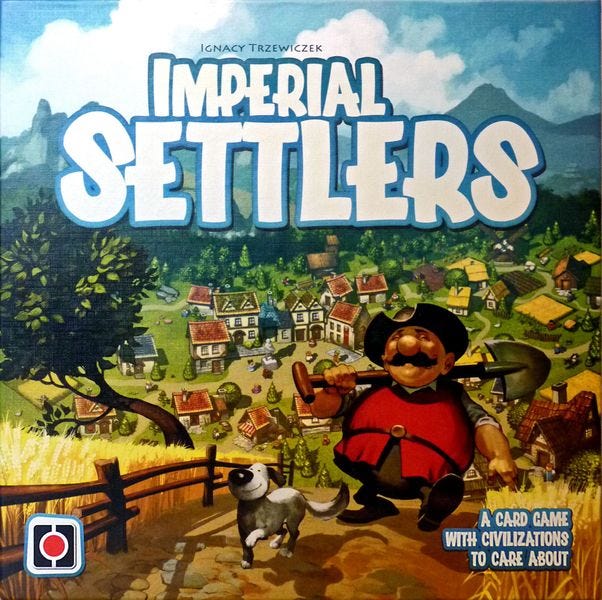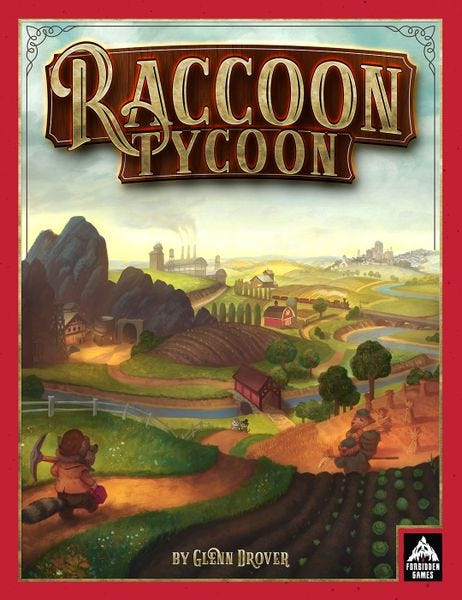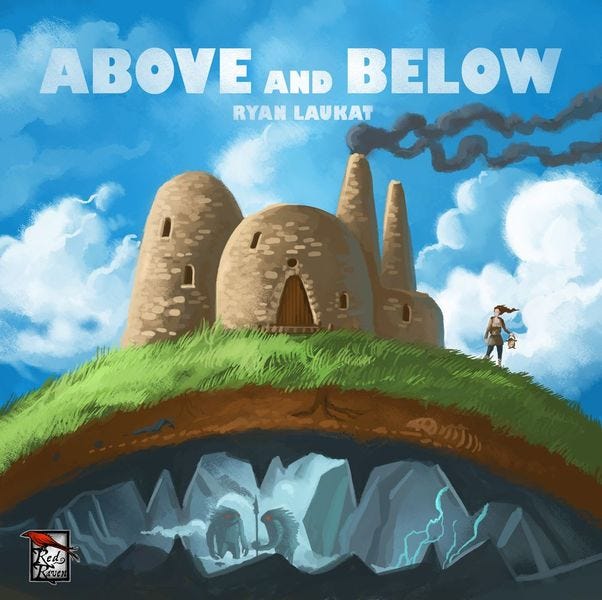Some games took a serious tumble this year, but they hold on in my top 100. Tomorrow’s post will be the end of this week and I’m excited to dive into the top 50!
70. Castles of Mad King Ludwig
Players: 2-4 (best 4)
Time: 90 mins
BGG Weight: 2.65
Another landmark game in my history of board gaming, this was one of the first games Adrianne really took to. Designed by Ted Alspach, the CEO of Bezier Games, you’re tasked with the follow-up to Ludwig’s Neuschwanstein. The King’s fancy is subject to change and you are one of many contractors vying to build the castle of his dreams.
Each round a player is the master builder and sets the price of the tiles in the market. Rooms have special conditions for being completed, which entails all exits connecting to another part of the castle. They also have special placement rules. There are varying bonus scoring objectives and the game is decided by who built the best castle.
And, I don’t really care if I built the best castle, I just want to visit the castles I get to build. It is really fun playing with the spatial puzzle of the tiles and managing the finances of your contractor to ensure you’re setting yourself up for long term success. The variable market means every game plays out a little different and it is fun to see what everyone has built when the game is over.
The player interaction keeps it from being multiplayer solitaire. This is another game that saw a lot of table time a decade ago, so I’m less likely to reach for it today. But it still deserves a place on this list for it’s history in our home and our gaming community.
69. Targi
Players: 2
Time: 1 hr
BGG Weight: 2.34
This might be my favorite two player game ever. The only reason it isn’t higher on my list is I don’t currently own it. Targi has a 5x5 grid with 16 set border actions and 9 cards dealt to the center, you place workers on the border actions and that dictates what cards you’ll take from the center. You typically play or discard a card, but you can keep one in your hand.
You’re working to trade resources and grow your family, in pursuit of victory points. Cards are played in 3 rows of 4, left to right and order is set once the card is played. It’s a very tight design and a supreme battle of wits. I was shocked by how fun it was and how much I wanted to play it again immediately after we finished.
Targi is designer Andreas Steiger’s only credited design, but it is fantastic and I hope that he has more games in his future.
68. Twice as Clever!
Players: 1-4 (best 2)
Time: 30 mins
BGG Weight: 2.29
Wolfgang Warsch’s Clever series is all represented here, as the games are variations on the same combo building, dice rolling gameplay. This is just the one that I own. Warsch is probably best known as the designer of the push your luck bag builder Quacks of Quedlinburg, but this is more up my alley. Players roll six dice, picking one to fill out a spot on their player sheet. Any dice lower than that number can be rerolled up to two more times and whatever dice aren’t used are shifted to a tray that other players will get to choose one to score at the end of your turn.
The balance between taking what you need, maximizing your turn and denying other players great combos makes this game really work your brain in different ways. I always loved Yahtzee and this is probably the best modern implementation I’ve played. The score sheet rewards you for working toward combos that will allow you to score in other categories and it is wildly fun to pull off a huge turn.
The game can be a little difficult to wrap your head around the first time you read the rules, surprising because it is lighter on the rules. It lead to one of our favorite gaming quotes the first time it was played, “That’s a wrinkle.”
67. Imperial Settlers
Players: 1-4 (best 2)
Time: 45-90 mins
BGG Weight: 2.77
Ignacy Trzewiczk is one of Poland’s premiere game designers, most notably for Robinson Crusoe which is number 88 right now on BGG’s top 100. Imperial Settlers is an iteration on 51st State, a game style that he has further refined. You play as one of four civilizations working to be the greatest in this newly discovered land.
Players draft cards and build a tableau of buildings to aid your efforts in the war for land and resources. You can make your nation an impenetrable fortress or raze buildings of your foes. It is a creative implementation of civ building in a tight package.
Each of the factions have slight asymmetry that give you different ways to build out and conquer the land. Head to head is a lot of fun, but I find the chaos of 4 players to also be a great way to experience the game. I’ve enjoyed it at 2-4 players, as I rarely play board games solo. It is considered a very good solo game from those that partake though.
66. Raccoon Tycoon
Players: 2-5 (best 4)
Time: 60-90 mins
BGG Weight: 2.14
I have never played the follow up Lizard Wizard, but I managed to score Raccoon Tycoon in a Target clearance sale and it hit the table the same day. I was smitten. Glenn Drover is known for big box civilization games, but Raccoon Tycoon is more a Knizia-style economic simulator with an adorable theme.
Each turn you play a card to create resources and shift the value in the market place, or sell resources to lower the value one space for each item you sell. You can bid on different rail way lines or claim towns as your own. Whoever best plays the marketplace ends up the most successful tycoon. As much as I hate the real world impact of tycoons, Raccoon Tycoon makes capitalism fun in a way Monopoly could only dream of.
65. Argent: The Consortium
Players: 2-5 (best 3)
Time: 60-150 mins
BGG Weight: 3.79
Level 99 games are clearly influenced by anime and JRPGs. A lot of people find the art style off putting in the board game space, but they execute it so well I find it charming. They also put a LOT of game in their boxes. They believe more is more and you get a real bang for your buck when you pick up any of their games.
Argent: the Consortium is not the clean-up nightmare that Millennium Blades is, nor does it have the luck of the draw aspect that works so well in that game. Instead, this is a worker placement engine builder with a lot of hidden information. How well you uncover the scoring objectives and adequately work toward them will dictate your ultimate success in this take on a magical academy that thankfully strays far from Harry Potter.
Your goal is the be the most influential mage in the land and you’re playing the other players as much as you’re playing the game. It is a game that will run long your first time playing, as there is a lot to manage. That can make it daunting. I played Dungeon Lordz, which I feel has a similar gameplay style, after this and I found this to be the superior game by far.
64. Tragedy Looper
Players: 2-4 (best 4)
Time: 2 hrs
BGG Weight: 3.55
Tragedy Looper is a 3 vs 1 game, where the one is a killer mastermind and the three are time detectives looping day after day, trying to piece together who is causing said tragedies. Players play three cards face down and they impact the game state. If the players fail to stop a tragedy befalling one of the key characters, the day restarts and they try again.
The game comes with a number of different scenarios and tragedy triggers in those scenarios that require the other players to work together to sus out what’s happening and who is behind it. I’ve never played anything quite like it, though I will say the mastermind is likely to fail if the players put their thinking caps on. That said, either side is fun, the cat and mouse game is really intriguing and it is fun trying to outsmart three other people.
I am also a sucker for good anime/manga AND time loops, so this scratches two underserved itches in board gaming. A lot of anime influenced art in board gaming is hyper sexualized and stylized in a poor imitation. This game feels more like a board game implementation of Persona than say, Magna Carta. You also have the ability to write your own scenarios, which gives the game life long after you complete those provided.
63. Above and Below
Players: 2-4 (best 3)
Time: 90 mins
BGG Weight: 2.53
Above and Below kicked off the Red Raven adventure trilogy (Near and Far/Now or Never) and was the game that really put the company on the map. Ryan Laukat firmly established himself as a top player in the American board gaming design space.
The game puts you as leaders of a village after your last home was ransacked by barbarians. As you work to rebuild your home, you find a series of caverns below that you can mine for resources and adventure. The game weaves storytelling into a worker placement game for a hybrid that was wildly innovative at the time.
In the game, you work to build your village while preparing adventure parties to explore the caves below. The town building aspect of the game is solid, if a little generic. The game really shines when you go below and encounter a series of different story events that change how the game plays out every time. I’m pretty sure I’ve seen everything in the book at least twice by this point, so I am less likely to play Above and Below, but I would be remiss if I didn’t include this game.
This was also a game we used to help a lot of our friends transition to medium weight games.
62. Bunny Kingdom
Players: 2-4 (best 4)
Time: 40-60 mins
BGG Weight: 2.3
Richard Garfield is, arguably, the most important American game designer in cardboard history. The grandson of President James Garfield and a mathematician by trade, Garfield made a customizable card game to be similar to his Dungeons & Dragons characters. While searching for a publisher for his game Roborally, Garfield met with fledgling Wizards of the Coast who asked for something smaller and cheaper to produce.
He combined his customizable card game with the idea of baseball trading cards and eventually brought them Magic: The Gathering. Gary Gygax, creator of Dungeons & Dragons and GenCon, might be the only name bigger in the history of tabletop gaming for Americans.
With a resume like that, you might think he would be content to milk M:tG. Instead, he continued to focus on game design (and does to this day, while still contributing occasionally to Magic). He did get Roborally published in 94 and has continued to turn out games, which brings us to Bunny Kingdom, a game that combines card drafting and area control in a clever way. You claim territories by playing cards, but you also get structures that add resources to your kingdom or carrot topped buildings that work as multipliers for said resources.
The game is simple, take two cards, play them and pass the rest. At the end of each round of drafting, you multiple the number of carrots in a continuously connected area by the different resources and that’s your score for that round. Camps allow you to build temporary connections but other players can kick you out if they play the actual card. Farms let you add resources to the cities to increase your multiplier.
The game is more Watership Down than Peter Rabbit. You’ll frequently find yourself cursing your fellow players for sniping a spot that you needed to bring your city together and the drafting decisions are tough. We have the expansion for this that adds a fifth player, but I will say that five players is too much. The game turns into a slog for me. Otherwise, the expansion does add some new dynamics, but the base game is solid all on its own.
61. Kingdomino
Players: 2-4 (best 2/4)
Time: 15-25 mins
BGG Weight: 1.22
Kingdomino has become a staple in the Blue Orange catalog, with an expansion and multiple sequels. I’ve been told that Origins is the way to go, as it gives you everything in one box, but as I have Age of Giants and Queendomino I doubt I will be picking that up. Designed by one of France’s preeminent designers, Bruno Cathala, Kingdomino is a simple tile drafting game.
You pick a tile, you place it in your kingdom so that it connects to at least one shared side. You can’t exceed a 5x5 grid and you score points for the size of connected areas multiplied by the number of crowns in said area. The game ends when all the tiles are drafted and everyone has, hopefully, built their full kingdom. Tiles that can’t be played are discarded. Variants include keeping your castle dead center in your kingdom and bonuses for building the whole kingdom.
The one twist is that if you draft lower number tiles, you get to draft earlier in the next round. The tactical nature of the game is engaging for such a quick game and you can easily play 2-3 games in rapid fire succession. This is a perfect game at any point in a game night and is one of my favorite coffee drinking games. It’s thinky enough to keep you engaged without requiring an intense amount of concentration. It is also affordable and compact. I think every game collection has space for a copy, unless you just really hate tile laying games.
In case you missed it:




